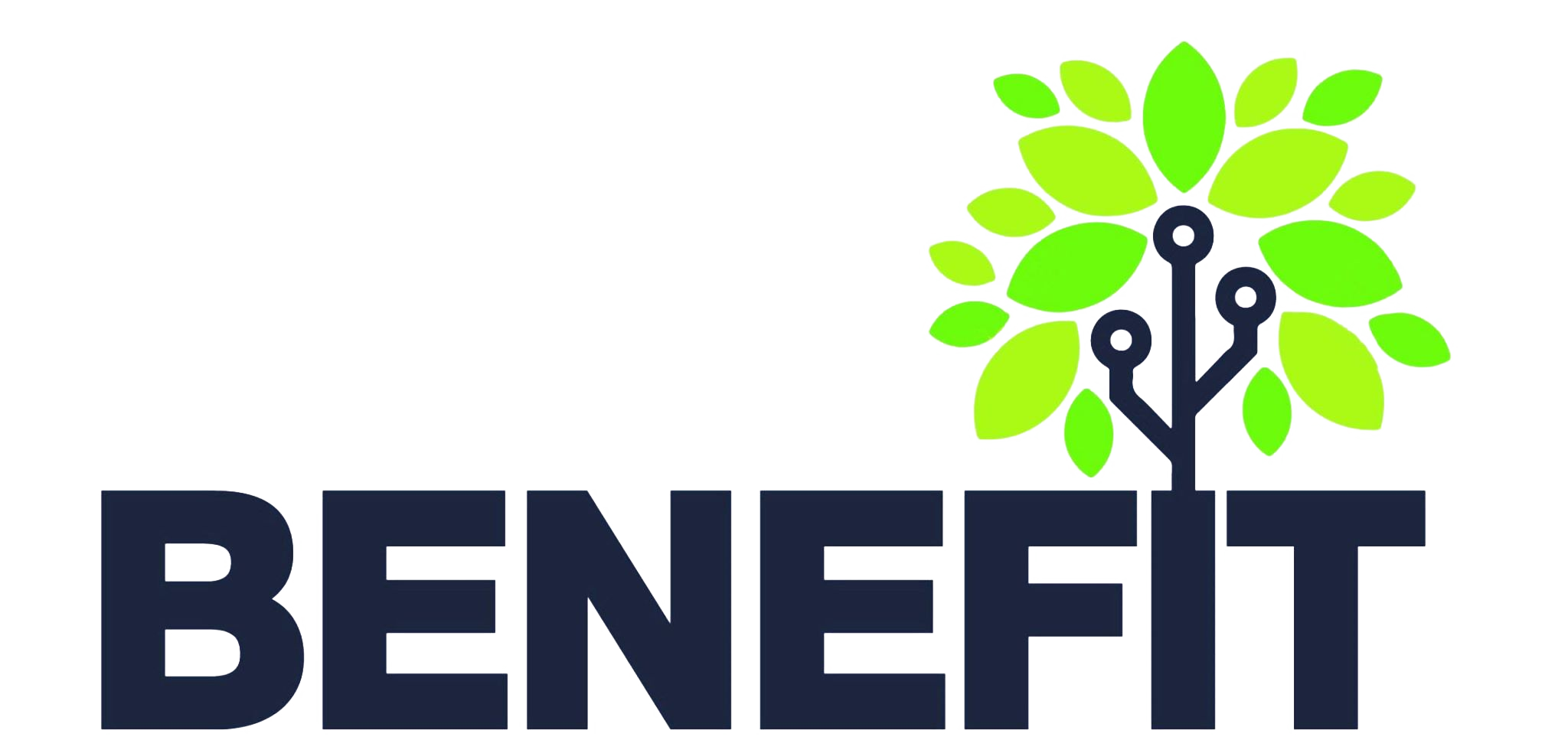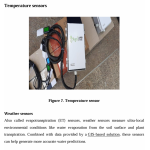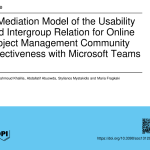Perspective of education in Agriculture 4.0 in selected countries in European Union and Palestine
Zuzana Palková1,2, Marta Harničárová1,2, Jan Valíček1,2, Vojtěch Stehel2
1Slovak University of Agriculture in Nitra Faculty of Engineering
Nitra, Slovakia
2 Institute of Technology and Business in České Budějovice
Department of Mechanical Engineering České Budějovice
Zuzana.Palkova@uniag.sk, https://orcid.org/0000-0002- 5782-8656
Nicolay Mihailov
University of Ruse Angel Kanchev Department of Electrical power engineering Ruse, Bulgaria
Maria Fragkaki
University of Patras Department of Educational Studies
Patras, Greece fragakim@upatras.gr
Walid Mahmoud Khalilia
Al- Istiqlal University
Faculty of Higher Studies and Scientific Research Jericho, Palestine
khaliliawalid@gmail.com, https://orcid.org/0000-0001- 8952-5628
Aziz Salameh
Faculty of Agriculture Al Quds Open University
Ramallah, Palestine azsalameh@qou.edu
==========================================
Abstract:
Keywords— component, formatting, style, styling, insert precision agriculture, digitalization, rural areas, Palestine, BENEFIT project
- INTRODUCTION
The agriculture sector in Palestine carries both economic and political importance. According to the Palestinian Central Bureau of Statistics [1], this sector is employed about 11,5% of the labour force. Further, the agriculture income represents 5,6% of the gross domestic product (GDP) and accounts for 21% of the total exports. More notably, the agriculture in Palestine plays a central role in land protection from Israeli confiscation and settlements. Thus, the vision of the agriculture strategy “resilience and development” announced by ministry of agriculture (2017- 2022), to be achieved during the coming years: to have a sustainable and feasible agriculture sector that can compete domestically and externally; and can effectively contribute to enhancing food security and the connection between the Palestinian people and their land, while also enhancing Palestinian state-building efforts through resource sovereignty.
The environmental and political challenges are the main factors threaten the agriculture sector in Palestine. However, the effects of these issues are more intensified when considered in the frame of Climate Change [3]. In this perspective, water quantity and quality have been continuously declining during the last years. Further, the scarcity of land resources, rapid population growth, pollution of the aquifers and marine environment, desertification and land degradation are challenging. Under the regional climate changes such as changes in
precipitation quantity, rain distribution, and the increases in seasonal temperature variability the environmental problems more intensified. Consequently, negative impact on agriculture sector my realized attributed to damage crops, decrease water availability, loss of biodiversity. Thus, can negatively affect the natural control of agricultural pests, and delay the growing seasons.
Generally, the industrial and/or digital technologies are expanding in global phenomenon with an emphasis on digitalisation, automation, control and robotics in various operations, related to environmental protection, soil cultivation management, optimization of crops nutrition, crop tending, etc. [2]. The added value of automated robotic systems to agriculture is the enhancement of their flexibility, concerning farmer decision making to select the optimal technological arrangements during the production process of the field crops, which entails not only economic but also environmental and social aspects [5]. As a result, the use of (digital) technologies could allow the agricultural sector to achieve big leaps in Palestine, especially in improving environmental protection, increasing productivity, and introducing the cultivation of new strategic classes of crops. The knowledge about advanced agricultural technologies have therefore become key for the farmers in these regions, throughout the process of cultivation and harvest.
“Precision agriculture”, also called “digital farming”, is an innovative concept in the countries of Middle East and especially in Palestine. This is not specifically about the technologies, but about the overall concept putting accent on understanding how the technologies can make the farming more accurate and controlled.
In the document “National Agricultural Sector Strategy (2017-2022) “Resilience and Sustainable Development” [4] as one of the main factors that had negative impact on (sustainable) agriculture development weak capacity to keep up with technological progress, low competitiveness of local products and abandoning production processes have been identified. As a possible solution of this problems the following two actions have been proposed:
- Working with the private sector to keep abreast of new technologies and encouraging their entry into the local market and
- Continuous training of human resources in the agricultural sector to keep abreast of technical agricultural
From these points of view, the innovative character of the BENEFIT project serves not only the capacity-building aspect for Palestinian universities, but also addresses the challenges faced by the Palestine regarding information and communication technologies (ICT), technological developments, and creating a global education and research framework for innovation and development regarding the integration of newest (digital) technologies into agriculture and rural development.
- MATERIALS AND METHODS
The BENEFIT project activities are based on the following main steps of the methodology:
- capacity-building of the team;
- the development and implementation process;
- the establishment of a platform for digital agriculture and piloting and
- conducting initially a short-term change inside the Palestinian universities and follow up with a long- term and a sustainable change.
Specifically:
- Capacity Building & Training
The academics training covers topics related to the instructional design framework of the project, based on the TPACK Instructional Design Model, Bologna principles, ECTS system, scientific publication and first of all precision farming like GPS guidance, control systems, sensors, robotics, drones, autonomous vehicles, variable rate technology, GPS-based soil sampling, automated hardware, telematics, and software which assists the team to design and develop curriculum and courses’ syllabuses proposed for each Palestinian universities focusing on one of the following areas:
- Digital Farming and Precision Agriculture
- Smart irrigation and fertilization
- Mechatronics in agriculture
- Automated control systems in agriculture production This starts on the alligment of the used pedagogy (pedagogical knowledge) with the courses content (content knowledge) and the state of the art technology (Technological Knowledge). Continusly, the pre-produced curricula and syllabus for each Palestinian University is following, as well as the accreditation of the updadet on new-developed This stage aims to define all the educational aspects of the new courses like core aim, main targets, learning objectives and outcomes.
Activities related to this phase are the following:
- characteristics, needs and desires of learners (diagnostic assessment-needs analysis)
- identification of the issues/problems/needs (needs assessment for problem solving)
- identification of the theories and methods to accomplish intended outcomes,
- definition of short-term and long-term changes intended for learners,
- identification of the evaluation strategies for used methodology, developed content, and intended
The output of this sub-phase is the redaction of Terms of Reference (Benefit ToR) that were produced. It serves as training blueprint to develop or enhance course or study program and enrich the learning, research and teaching process inside Palestinian Universities, focusing on precision agriculture in local communities. The main target is the better consideration of local, regional and national authorities and the potential implementation of concreate modern and open technologies and resources in agriculture as a stimulus at development of Palestinian economy and improving job creation.
- Development, Implementation and Deployment
Based on the output of previous phase – Terms of Reference
- each Palestinian’s partner develops of their own Curricula and Syllabus.
The process contents following activities:
- Technology, Content and Pedagogy alligment;
- Identify Issues/Problems/Desires/Needs;
- Conduct Needs Assessment and Analysis;
- Refine and restate the issue, if needed, and develop the intended outcomes and educational objectives;
- Select Meaningful Content;
- Design Experiential and state of the art Methods;
- Produce a qualitative and anhancing
- Infrastructure and deployment
This phase plans the installation process for the whole equipment’s related to pilot site for digital agriculture and piloting, including equipment’s installation, deployment and testing equipment’s.
- RESULT AND DISCUSSIONS
Capacity building for Palestinians professional development is the main axis of the BENEFIT project that gives the Palestinian higher education institutions and their staff a great opportunity to gain more expertise and develop their academic, research, and technical staff by opening new knowledge and scientific research.
In the beginning, the BENEFIT project focused on the Capacity Building and transfer of knowledge-under an interactive process- from the EU to Palestine academic sector and Palestinians’ academic training. These activities mainly focused on the training workshops and covered topics related to the most synchronous methodologies, the most constructivist pedagogies and emerging technologies, like precision farming, GPS guidance, control systems, sensors, robotics, drones, autonomous vehicles, variable rate technology, GPS-based soil sampling, automated hardware, telematics, and software and their possible application in agriculture processes. The obtained knowledge assisted the teams to design and develop the curriculum and courses’ syllabuses proposed for each Palestinian university.
To reach as much as efficient and effective results of training, all Palestine’s teams realized Institutional Readiness Surveys, where defined all the educational aspects of the accreditation processes, core aims of the courses, main targets, learning objectives, outcomes, the responsible infrastructure of laboratories, etc.
Activities related to this phase were twofold:
- Institution Readiness Level survey, which explored the ‘readiness’ of the Palestine’s partners as it relates to the adoption the knowledge transfer from the EU partners and the development of innovative courses in precision agriculture and identified the issues/problems/needs of each PS
- The Term of References design, which defines the meaningful alignment of content, the pedagogy and the used technology, any characteristics, needs, and desires of learners, identifies the theories and methods to accomplish intended outcomes, defines the short-term and long-term changes intended for learners, and identifies the evaluation strategies for used methodology, developed content, and intended
- Institution Readiness Level Survey
The survey was realized in the period March 2020 – June 2020 and following universities were involved:
- An-Najah National University (ANNU, najah.edu),
- AL-ISTIQLAL UNIVERSITY (PASS, alistiqlal.edu.ps),
- Palestine Technical University-Kadoorie (PTUK, ptuk.edu.ps),
- Al- Quds Open University (QOU, qou.edu)
- Hebron University (HU, hebron.edu),
- University College of Applied Sciences (UCAS, newucas.ucas.edu.ps).
Fig. 1 and Fig. 2 present basic information about the academic staff and students. Fig. 3 shows the situation with the number and levels of study programs offered by each university.

Fig. 1. Number of academic staff

Fig. 2. Number of academic staff

Fig. 3. Number of Study programs
The first part of the survey focused on the ECTS and Bologna principles implementation in the Palestine. We asked for following questions:
- Do you follow /MSc./PhD. organisation of the high education?
- Is there a national agency which recognizes and monitors the implementation of ECTS and Bologna principles (or equivalent)?
- When a /MSc/PhD. cycle is considered completed at your university
- How do you measure student’s workload at your university?
- List the criteria that are baseline for the measure of students’ workload.
- Do you use catalogue of subjects? How is it organized?
- Describe the process of recognition students’
- Describe the evaluation criteria for students gaining
- Do you think that the programmes of studies at your institution/university are mostly “Student- oriented” or “teacher-oriented”?
The main findings of the survey are the following: All universities follow three levels’ tertiary education format. In Palestine exists AQAC – The Accreditation and Quality Assurance Commission, part of the Ministry of higher education. Each study program (a Bc/MSc/PhD.) has an assigned number of credit hours and each high education institution has its specific credit hours in a study plan. The enrolled students in these programs should complete the programs’ credit hours successfully to earn the program’s degree. It is worth knowing that each program has its own methods of evaluation including in its course syllabus.
The assessment of the student’s workflow is mainly based on the grades of final or mid-term exams, seminar presentations, reports on special topics, and laboratory reports.
The second part of the survey focuses on research & development activities and the following centres of excellence have been identified:
- At ANNU Agricultural Research and Training Centre activities are oriented on applied research in plant and animal production.
- At PASS Date palm research centre focuses on water management, plant protection, tissue culture and soil protection related to the growing of date
- At PTUK Innovation and Education Technology Center (IETC) activities focus on fostering entrepreneurship among students and enable them to transfer their innovative ideas into real business through training, consultation, networking and providing fund to build their projects’ prototypes or to establish their own
- At HU Excellence Center provides plant production and protection
- At UCAS UCIBD: UCAS Centre of Innovation and Business
- The Term of References design
The BENEFIT Term of Reference (BENEFIT ToR) defines the purpose and the structure of the courses developed and the shared goal of the stakeholders, who have agreed to work together to accomplish that goal. The Terms of Reference of the project provide developers with clear instructions for the pedagogy, the technology and the
content was used for syllabus of the curriculum design. It provides the structure and methodology that is the most effective for BENEFIT Course(s) Syllabus and integrates three topics:
- BENEFIT instructional design and excellence framework,
- BENEFIT course syllabus,
- BENEFIT accreditation
Following paragraphs present the ToRs for a course developed under the BENEFIT project and as a result of Institution Readiness Level Surveys.
ANNU BENEFIT Term of References
The “Protected Agriculture Management” course is a 4- credits course that gives students both theoretical and practical skills knowledge in a variety of concepts and techniques on protected agriculture management. Students will gain the required skills that are essential to the importance and types of protected farming; greenhouse design, components, and installation; and agricultural processes and their effect on increasing agricultural productivity and improving quality of the product inside these houses by using high tech.
The main objectives for this course are defined as follows:
- Get to know the various means of protection and types of covering
- To acquire the necessary knowledge about controlling environmental factors under protective
- To grow and manage the production of some crops grown under protected structures, g. tomato, cucumber, pepper, kidney bean, and lettuce with emphasis on up-to-date technology.
- To study in-depth, the soilless cultivation
Upon successful completion of this course, students should be able to:
- Identify facilities used in protected
- Differentiate the functions of the facilities used in protected agriculture.
- Manage the production under protective
- Operate successfully with new technology involved in protective structures.
- Develop a proposal for industry-based problems
- Demonstrate ability to work effectively with a team within predefined time constraints.
- Develop suitable documentation and reports with a high level of detail and
- Evaluate and justify the main outcomes of the
PASS BENEFIT Term of References
The course Food Security/Quality examines precision agriculture and food security/quality in the historic, modern and post-modern eras. Case studies are drawn from Palestine and international contexts to examine humanity’s changing relationship with production, supply chain, ecological, economic, and socio-cultural systems fundamental to the provision of food. The types of issues that are introduced include pre-modern or traditional agriculture; the origin and development of agricultural biodiversity; the relationship between food supply and cultural identity; modernization; new technological
development and application; smart agriculture and food security; the political-ecologies of agriculture; environmental management; the emerging alternative roles of agriculture to food production; and the future roles of alternative systems based on diversity and location.
Upon successful completion of this course students will be able:
- To address the vital issue of food security/quality in an interdisciplinary and hands-on fashion.
- To offer interdisciplinary food security/quality education in the region.
- To have knowledge and understanding of the content and techniques of food security/quality at advanced levels that are internationally
- To locate, analyze, evaluate, and synthesize information from a wide variety of
- To apply practical, creative, and innovative solutions, both independently and cooperatively, to current and future
- To understand proficiency in the appropriate use of contemporary
PTUK BENEFIT Term of References
Precision agriculture has been incorporated in some parts of the existing courses as modules:
- Module 1: Design of Irrigation and Drainage (water flow in pipelines and open channels, programming and management of irrigation water, and irrigation scheduling),
- Module 2: Soil Chemistry and Physics (the perspective of soil chemistry and physics, data from multiple sources such as nutrient sensors, soil moisture and temperature will be used as new technologies for assist physical properties of soil, and the data of nutrient sensors will be used to assess the soil quality in term of soil water plant relationship and optimizing soil management),
- Module 3: Soil Fertility and Fertilizers (soil nutrients reaction and transformation, soil nutrients evaluation, methods of fertilizers application and fertilizer programing),
- Module 4: Agricultural Economics (Big data management and analysis, economic analysis, fundamental to the precision agriculture, adaptation and technology transfer methodologies),
- Module 5: Introduction to Animal Science (principles of precision agriculture in the crop and livestock production, data acquisition and management, the application of the sensor in poultry farm and in the cultivation of the hydroponic barely),
- Module 6: Plant physiology (the precision agriculture based on crop physiological principles, underlying the relationship between environmental factors and crop growth and development and yield, in order to optimize growth environment for plant production).
Upon successful completion of this course students will be able:
- To understand the principles of water flow in pipeline and open canals and management of the drip and sprinkler irrigation systems at farm
- To understand how to evaluate soil fertility based on observation, soil chemical testing.
- To estimate the soil physical and chemical properties that affect the availability of nutrients in the soil, and how to consider these properties for optimizing fertilizer
- To understand the relationship between soil properties and water and how to take soil samples and compare the label analysis with field analysis that measure sensors in term of moisture content and nutrient
- To learn how to manage, analyze, and interpret big data and to clarify data risk management through backup systems and safety regulation
- To understand the principles of precision agriculture topics in livestock, installing and using the sensor in the poultry farms, the cultivation of hydroponic
- To identify the physiological processes in relation to plant growth and yield, the various methods for measuring plant physiological parameters, and to understand the influence of environmental factors on crop growth and development.
HU BENEFIT Term of References
The agriculture sector in Palestine is mainly depending on producing fruits and vegetables. The Palestinian farmers have been for long time are using the traditional methods for planting these crops. The need for developing the ways of planting fruits trees is very important in increasing the production and decreasing the costs so making the farmers getting more profits.
The college of agriculture in HU is aware of this and it teaches the students who will become the agricultural extension agents this course, which introduce the techniques of fruit production so the farmers of fruit and vegetable producers will benefit from these techniques and increase their revenues.
The course Fruit Trees Production covers the economic importance of fruit trees and the reality of its production globally and locally. The basic information’s necessary to produce both types of fruit trees; deciduous and evergreen, including stone fruits, pome fruits, nuts, citrus, olives, bananas, grapes, figs. It also includes new rootstocks and cultivars, training and pruning methods, pollination and flowering, indices of maturity, in addition to environmental requirements.
This course covers the economic importance of fruit trees and the reality of its production globally and locally, the basic information’s necessary to produce both types of fruit trees; deciduous and evergreen, including stone fruits, pome fruits, nuts, citrus, olives, bananas, grapes, figs. and includes new rootstocks and cultivars, training and pruning methods, pollination and flowering, indices of maturity, in addition to environmental requirements.
The main objectives for this course are defined as follows:
- To understand the importance of fruit trees and its nutritive
- Knowing the management practices of the
- Studying the effects of environmental conditions on fruit trees growth, flowering, fruit set, and
Successful completion of the course should lead to the following outcomes:
- Identifying different types of fruit crops, which can be successfully grown locally.
- Students will be introduced to different aspects of fruit culture such as physiology of plant growth and
- Students will learn how cultural practices can be used to manipulate growth and development and optimize fruit yield and
- Focus on the best management conditions and practices for fruit.
- Describing the general background requirements needed to grow a wide variety of fruit
UCAS BENEFIT Term of References
The major of agricultural engineers’ assistants aims to prepare a cadre of agricultural technicians who can deal independently with personal and work-related challenges so that they have the ability to find suitable solutions to the problems that the agricultural sector might face in both fields plant and animal in which achieve the requirements of the labor market and achieve the necessary qualifications in order to develop the agricultural sector and achieve the sustainable development.
The course Irrigation and Fertilization aims to raise students’ ability to collect information about the types of fertilizers available in the market and the percentage of elements in them, as well as methods for preparing nutrient solutions, In addition to learning about the fertigation system in relation to its operation and maintenance method and its use in conventional and isolated agriculture as well as helping students on how to diagnose the symptoms of deficiency of elements, design schedules for fertilizing crops and preparing work reports.
The main objectives for this course are defined as follows:
- Determine the types of agricultural fertilizers in the market and know their chemical
- The ability to implement and apply fertilization programs that were previously designed according to the fertilizer needs of the crop.
- The ability to diagnose pathological injuries related to deficiency of
- Estimating the water requirements of agricultural
- Implementation of safety measures and environmental
- Use of agricultural fertilizers according to the needs of the plant and based on the symptoms of deficiency that have been
- Apply the best use of water during irrigation of
CONCLUSION
The agriculture sector in Palestine carries both economic and political importance. The vision of the agriculture strategy “resilience and development” announced by the Ministry of agriculture focus emphasis on a sustainable and
feasible agriculture sector that can compete domestically and externally; and can effectively contribute to enhancing food security and the connection between the Palestinian people and their land, while also enhancing Palestinian state-building efforts through resource sovereignty.
The article presents the results of the BENEFIT project (609544-EPP-1-2019-1-PS-EPPKA-CBHE-JP) which runs
under the Erasmus+ Capacity Building for Higher Education program. The activities of the projects focus on precision farming, an innovative concept in the countries of the Middle East and especially in Palestine. This is not specifically about the technologies, but about the overall concept putting the accent on understanding how the technologies can make farming more accurate and controlled.
The BENEFIT project focuses not only on the capacity- building aspect for Palestinian universities, but also addresses the challenges faced by Palestine regarding ICT, technological developments, and creating a global education and research framework for innovation and development regarding the integration of the newest (digital) technologies into agriculture and rural development.
At last, but not least, cooperation between EU and Palestine universities contributes to multicultural mating and collaboration.
REFERENCES
- Palestinian Central Bureau of Statistics. (2013). Impact Properties of Agricultural Holders to Absorb and Use of Modern Technology in the Palestinian Territory- Dissemination and analysis of Agricultural Census – Retrieved from http://www.pcbs.gov.ps/pcbs_2012/Publications.aspx
- Cviklovic, , & et al. (2016). Navigation algorithm using fuzzy control method in mobile robotics. Acta technologica agriculturae, 19(1), 19-23.
- (2016). National Agricultural Sector Strategy (2017-2022) “Resilience and Sustainable Development. FAOLEX. Retrieved from http://www.fao.org/faolex/results/details/en/c/LEX-FAOC174456/
- The State of Palestine Ministry of Agriculture, National Agricultural Sector Strategy (2017-2022). “Resilience and Sustainable Development”. Retrieved from https://prais.unccd.int/sites/default/files/2018- 07/English%20Strategy%202017-2022.pdf
- Toth, L., & et al. (2016). Landmark finding algorithms for indoor autonomous mobile robot AGRIS on-line Papers in Economics and Informatics, 7 (4).
ACKNOWLEDGMENT
The project BENEFIT – Boosting Innovation in Education and Research of Precision Agriculture in Palestine, project reference number: 609544-EPP-1-2019-1- PS-EPPKA2-CBHE- JP has been funded with support from the European Commission. The European Commission’s support for the production of this publication does not constitute an endorsement of the contents, which reflect the views only of the authors, and the Commission cannot be held responsible for any use which may be made of the inform








